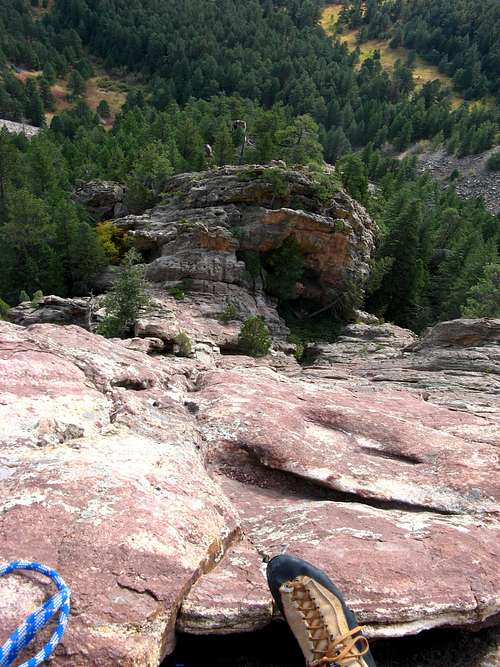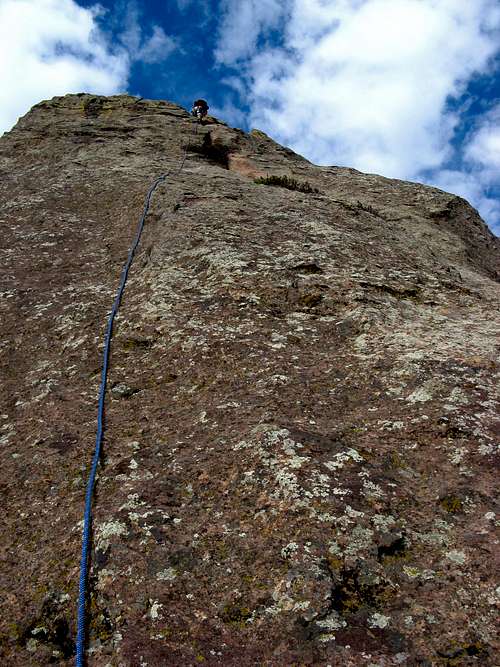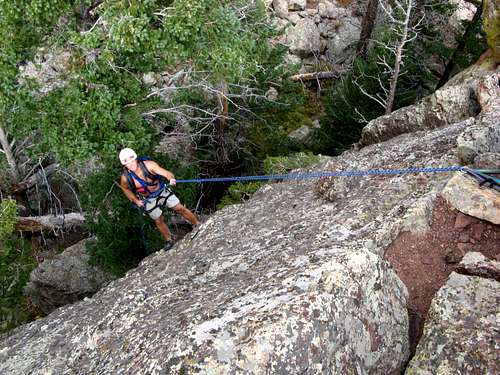|
|
Route |
|---|---|
|
|
39.95062°N / 105.28805°W |
|
|
Trad Climbing, Scrambling |
|
|
Spring, Summer, Fall |
|
|
Half a day |
|
|
5.4 (YDS) |
|
|
5 |
|
|
Overview
This is a very fun route and is listed as one of Gerry Roach's "Top 10" for all the Flatirons. Plan on 1.5 - 2 hours for the approach and remember that the longer approach almost guarantees a lack of other climbers. The bushwhack to and from the route is fairly painless, the climbing fun/consistent, a rappel on the way up and awesome views of the historical North Face of the Maiden all add up to make this a memorable climb.A quick note:
This route can be climbed a variety of ways. Just like all other Flatiron slab routes, this will test your ability to read the rock from below. If you don't follow the easiest route you can easily stray onto harder rock. I led the more aesthetic/direct line on the second pitch and ended up soloing a 5.5-5.6 slab. Be prepared!
Getting There
Follow the description on the main page to the base of the route.Route Description
Rope up at the broken saddle between the Fatironette and the Fatiron. The pitches I describe are based on a 60m rope.Eastern Piece
P1 (4th class) - Aim up and right and belay at the trees. No protection but only 4th class.
P2 (5.4) - Aim further right than you think you should. Imagine the crack higher extending all the way down. You want to start 15-30 feet right if the crack and pass the tree and belay at a flake.
P2 Variation (5.5-5.6R) - You can aim straight up for the bulge/flake. This is thinner than it looks from below and it felt like 5.5-5.6 with no protection. This is the more obvious line but a definite "no fall" zone.
P3 (5.4) - Follow the crack up and over the bulge. Belay above the bulge.
P4 (5.0) - Aim up following the easiest line to the summit of the eastern piece.
Transition - There is a drop separation the two pieces. Scramble SW down until you reach a tree that is easily slung. Rappel west down onto the second piece. There is also a down-climbing option but it passes through a so called 5.4 crack that looks much harder than the rating.
Western Piece
P5 (4th class) - Angle right following the obvious easy line around the water gully. Belay at the flake above the gully is the most obvious solution but is longer than a 60m. I climbed up with my partner for a bit so he could reach.
P5 Variation (5.5-5.6R) - Follow the gully straight up and over the bulge. I seconded this but did not see any possible placements and would imagine it to be a sketchy lead.
P6 (4th class) - This is an easy romp straight up to the top.
Descent
Rappel west off of a tree then bushwhack down the north side of the rock.Follow the description on the main page for some more detail.
Essential Gear
A typical Flatiron rack. - We carried a small rack of nuts and cams and the only one I was glad to have was a large cam for above the P2 variation and for setting belays.Rope - Would be easier to string pitches with a 70m.
Water - Long approach = thirsty climbers!






